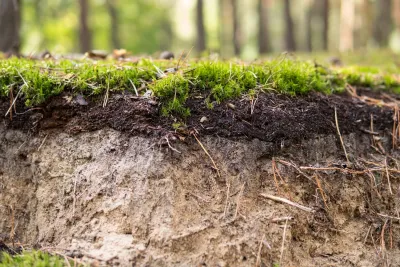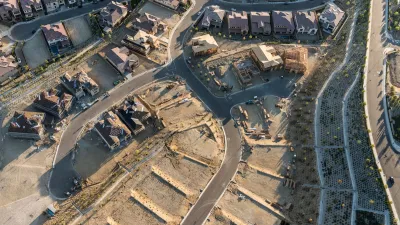Los Angeles County residents and experts are turning to nature-based methods like bioremediation to address long-standing and fire-exacerbated soil contamination without resorting to costly and disruptive removal.

In the wake of the Eaton and Palisades wildfires, many Los Angeles residents are grappling with concerns about toxic soil contamination — not just from ash and smoke, but also from decades of industrial, agricultural, and residential pollution. Soil tests conducted by the L.A. Times in various burn areas revealed alarming levels of lead, zinc, and high alkalinity, though results varied widely. Notably, even areas that did not burn showed dangerous levels of heavy metals like lead and arsenic, often lingering from lead-based paints and outdated fertilizers. While scraping away the topsoil is a common remediation method, experts warn it's unsustainable and can destroy the vital layer plants rely on.
As alternatives to excavation, many Angelenos are turning to in-place remediation techniques such as mulching, hugelkultur, and phytoremediation — using fungi, minerals like zeolite, and toxin-absorbing plants like sunflowers and corn. Landscape designers Shawn Maestretti and Leigh Adams, both of whom lost homes in the Eaton Fire, are leading by example, nurturing their fire-scorched landscapes through decades-old soil-building techniques. Community groups like Plant Community have also implemented sheet mulching and raised beds in South L.A., allowing formerly incarcerated individuals to safely grow food and reconnect with nature despite elevated soil toxins.
Environmental toxicologist Danielle Stevenson, who leads the nonprofit Centre for Applied Ecological Remediation, is helping drive this shift by training residents in bioremediation practices that detoxify soil without removing it. She emphasizes the need for sustainable, community-led strategies to address widespread contamination, noting that removing soil often just moves the problem rather than solving it. By layering mulch, adding absorbent minerals, and cultivating specific plant species, communities are proving that even the most polluted soil can be transformed — not discarded — in the pursuit of healthier ecosystems and environmental justice.
FULL STORY: Polluted soil is all over L.A. Here’s how to fix it, even if your home didn’t burn

Trump Administration Could Effectively End Housing Voucher Program
Federal officials are eyeing major cuts to the Section 8 program that helps millions of low-income households pay rent.

Planetizen Federal Action Tracker
A weekly monitor of how Trump’s orders and actions are impacting planners and planning in America.

Ken Jennings Launches Transit Web Series
The Jeopardy champ wants you to ride public transit.

Sacramento Plans ‘Quick-Build’ Road Safety Projects
The city wants to accelerate small-scale safety improvements that use low-cost equipment to make an impact at dangerous intersections.

How Project Connect Would Change ‘The Drag’
A popular — and sometimes deadly — Austin road will exchange car lanes for light rail.

Milwaukee Road to Get Complete Streets Upgrades
The city will reduce vehicle lanes and build a protected multi-use trail including bioswales and other water retention features on its ‘secret highway.’
Urban Design for Planners 1: Software Tools
This six-course series explores essential urban design concepts using open source software and equips planners with the tools they need to participate fully in the urban design process.
Planning for Universal Design
Learn the tools for implementing Universal Design in planning regulations.
Ada County Highway District
Clanton & Associates, Inc.
Jessamine County Fiscal Court
Institute for Housing and Urban Development Studies (IHS)
City of Grandview
Harvard GSD Executive Education
Toledo-Lucas County Plan Commissions
Salt Lake City
NYU Wagner Graduate School of Public Service





























